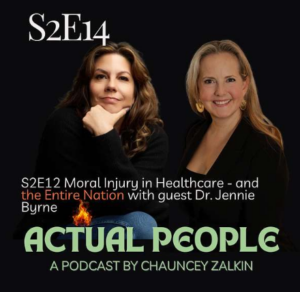As we enter mid-January, many people are thinking about their New Year’s Resolutions. Some resolutions are going strong, some are waning, others may be already abandoned. Why are resolutions such an ineffective way to make change in our lives?
Let’s start with the definition of resolution: “a firm decision to do or not to do something”.
A decision is just that, a decision. Decisions have neither plan nor accountability nor follow-up. So should it be of surprise that resolutions often fail? I believe that well-structured goals with accountability are a far more effective way to make change. As an example, I really like the way Michael Hyatt lays out goals in his “Your Best Year Ever” system, there are two types of goals:
achievement goal – represent one-time accomplishments
habit goal – new regular, ongoing activity
Most resolutions are in fact designed as a habit goal. We want to replace a negative habit with a positive habit or create a new habit. It is important to include with any habit goal:
start date – when are you going to start the new habit?
habit frequency – how frequently are you doing to do the new habit?
time trigger – what time or event is going to indicate to you that it is time to do the new habit?
streak target – how many days in a row do you want to complete the new habit?
It is also interesting to note that habit goals can also be used as a means towards accomplishing an achievement goal. For example, if your goal is to write a book this year, your first habit goal could be to write 100 words a day, starting January 15th, every other day, at 7PM in the evening right after you finish dinner, for 50 days.
Mr. Hyatt also points out the difference between SMART goals and SMARTER goals. If you have worked with SMART goals before, you will notice some key differences for SMARTER GOALS:
SPECIFIC – the more specific and concrete the goal, the better. I would add here that breaking it down into a series of small specific steps makes it much easier to get started and make progress.
MEASURABLE – you have to be able to know when the goal is completed!
ACTIONABLE – the goal must be something YOU can complete. I have learned this the hard way when my goals include other people, it is no longer in my control, and I may not get it done.
RISKY – I love this one, the idea is to push you out of your comfort zone and take some risks. When you finish a risky goal, you can confidence. Setting the bar too low can also lead you to lean back rather than lean in to your goals.
TIME-KEYED – tagging a specific time to each step also makes it more likely to complete, but please be reasonable! His book goes through an entire series of time-management skills that will help ensure you can get it done. Some key ideas: assign deadlines (distant deadlines discourage action), watch your bandwidth (only 2-3 major deadlines per quarter).
EXCITING – so many “resolutions” are boring and tedious so we make them a resolution to make them more exciting! This doesn’t really work. Can you link your goal to an exciting and inspiring outcome? For example, instead of “getting in shape”, try “I will be able to hike 10 miles this summer on my vacation with my teenage son with a 20 pound backpack with a picnic meal we will make together on the mountain”.
RELEVANT – this is HUGE. How important is this goal? What will the goal help you do? How does this affect your life? How does this affect the lives of those around you? Being relevant makes it MEANINGFUL.
Are you struggling with your “resolutions”? Check that they are goals that meet the SMARTER criteria and if not, make the adjustments that will let you see the changes you desire.







